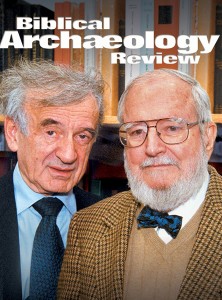First Person: Needed: A Protocol to Test Authenticity
Will the scholarly community face its obligation?
In light of the forgery frenzy going on in Israel at the moment, readers are likely to ask whether the Aramaic inscriptions on pottery sherds (ostraca) discussed in André Lemaire’s article on page 38 are authentic or fakes. Trying to anticipate readers’ queries, I asked André about this.
He is quite confident they are authentic, based on the paleography (the form and slant of the letters) and the linguistics. “If someone wants to show they are forgeries,” the Sorbonne paleographer told me, “I am ready to listen. But they must give me reasons. They cannot just say they have a suspicion without reasons.”
He also observed that many other paleographers had seen ostraca from this collection and had raised no question. Among them are leading Israeli paleographers Joseph Naveh and Ada Yardeni.
Other signs of authenticity are the difficulty in reading many of the ostraca in the collection and the existence of letters so faint that they can be seen only when the sherd is wet. Also, most of the individual ostraca are not very important, so there would be little to gain from going to all the effort to make a fake. When Lemaire first saw the “Yaho” ostracon (the centerpiece of his article), he waited several years before telling the owner of its importance.
Is this enough to assure the public? I don’t know. It would be helpful if other experts would speak up. Should we insist that every ostracon be submitted to a board that would include paleographers, linguists and scientists to vouch for its authenticity before it is published?
Already a library member? Log in here.
Institution user? Log in with your IP address.

